|
|
|
|
|
|
|
|
|
|
|
|
|
|
|
|
|
|
|
|
|
|
|
|
|
|
|
|
|
|
|
|
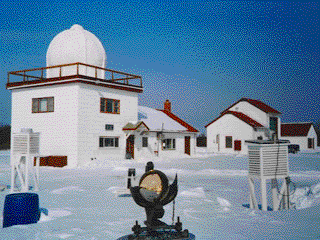 |
|
|
|
|
|
|
|
|
|
|
|
|
|
|
|
|
|
 |
 |
|
|
|
|
|
|
 |
|
 |
|
|
|
|
|
|
|
|
|
 |
 |
|
|
|
|
|
|
|
|
 |
 |
|
|
|
|
|
 |
|
|
|
|
|
 |
|
|
|
|
 |
 |
|
|
|
|
|
|
 |
 |
|
|
|
|
|
|
|
 |
|
 |
|
|
|
|
|
|
|
|
|
 |
 |
|
|
|
|
|
|
|
|
|
 |
 |
|
|
|
|
This is the old weather station (from which the picture of the aurora borealis was taken) and where François, worked for Environment Canada until the station's closing in 1993. The dome houses the radar unit used to track the balloon. The building further away is where the balloons are inflated and where hydrogen is produced to fill them. For current Moosonee weather information try here.
Below, you see him measuring barometric pressure.
|
|
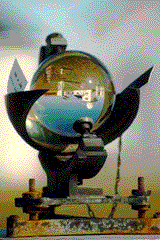 |
|
|
|
|
|
|
|
|
|
|
|
|
|
|
The heliograph is used to measure hours of sunshine. |
|
|
|
|
|
|
|
|
|
|
|
|
|
|
|
|
|
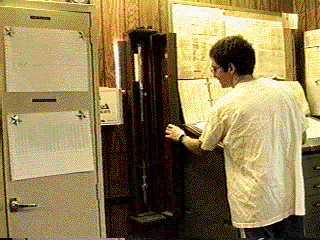 |
|
|
|
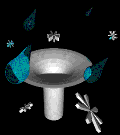 |
|
|
|
|
|
|
|
|
A rain gauge is used to collect precipitation (to see a graph of precipitation and other weather related data, click here). The technicians would measure precipitation in millimetres. For information on drinking water and groundwater issues, try here.
|
|
|
|
|
|
|
|
|
|
|
|
|
|
|
|
|
Barometric pressure often indicates changes in the weather.
|
|
|
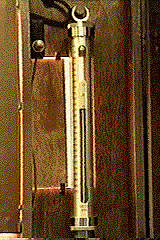 |
|
|
|
|
Twice a day a balloon is inflated with hydrogen and lifts a little instrument box into the atmosphere. The box is not recovered and usually falls to the earth about 200 km away, Until it goes out of range, it takes measurements and sends a signal back to the station. From its position and indications, the technicians get a reading of atmospheric conditions. |
|
|
|
|
|
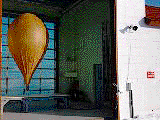 |
|
|
|
|
|
|
|
|
|
|
|
|
|
|
|
|
|
|
|
|
|
|
|
|
|
|
|
|
|
|
|
|
|
|
|
|
|
I hope to be able provide some video footage of a balloon launch. If this would interest you, please let me know. |
|
|
|
|
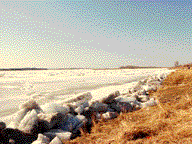 |
|
|
|
|
|
|
|
|
|
|
|
|
|
|
|
|
|
|
|
|
|
|
|
|
Another duty the technicians performed was to measure the thickness of the ice on the river. At its thickest, which is just before spring breakup, the ice is over 3 ft. thick. Here some has been driven up the shores. Ice blockage up river can cause flooding in the area.
I hope to be able provide some video footage of breakup soon. If this would interest you, please let me know.
|
|
|
|
|
|
|
|
|
|
|
|
|
|
|
|
|
|
|
 |
|
|
|
|
|
|
|
|
|
|
|
|
|
|
|
|
 |
|
|
|
|
|
|
|
|
To top of page |
|
|
|
|
|
|
|
|
|
|
|
|
 |
|
 |
|
|
|
|
|
|
|
|
|
|
|
|
|
|
|
|
|
|
|
|
|
|
|
|
|
|
 |
 |
|
|
|
|
|
|
|
|
|
|
|
|
|
|
|
|
|
|
|
|
 |
 |
|
|
|
|
|
|
|
|
|
|
|
|
|
|
 |
|
|
|
|
|
|
|
|
|
|
|
|
|
|
 |
|
|
|
|
|
|
|
|
|
|
|
|
|
 |
 |
|
|
|
|
|
|
|
|
|
|
|
|
|
|
|
|
 |
 |
|
|
|
|
|
|
|
|
|
|
|
|
|
|
|
|
|
 |
|
 |
|
|
|
|
|
|
|
|
|
|
|
|
|
|
|
|
|
|
|
|
|
|
 |
 |
|
|
|
|
|
|
|
|
|
|
|
|
|
|
|
|
|
|
|
|
|
|
|
|
|
|
|
 |
 |
|
|
|
|
|
|
|
|
|
|
|
|
|






